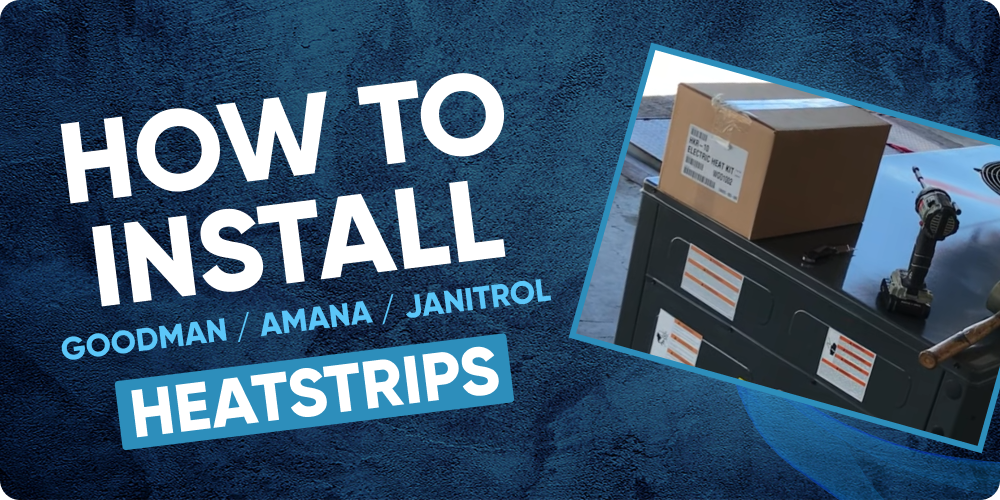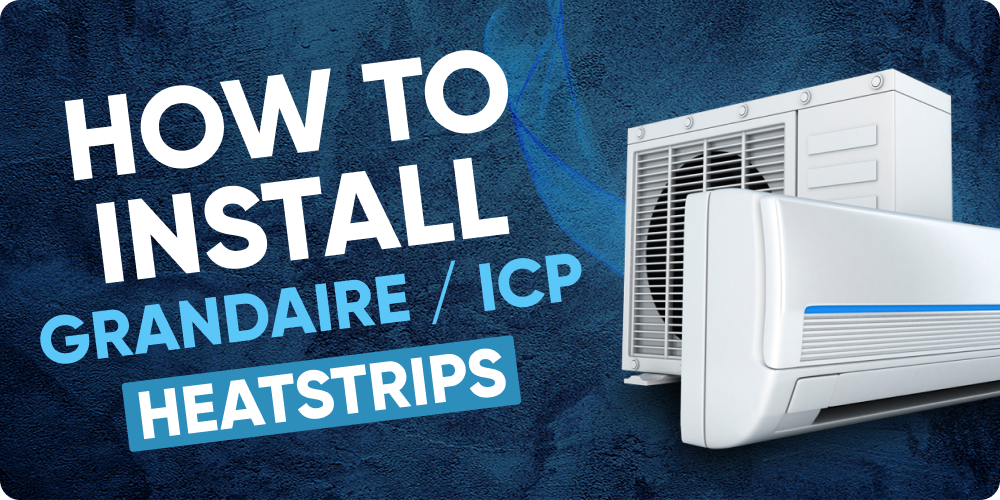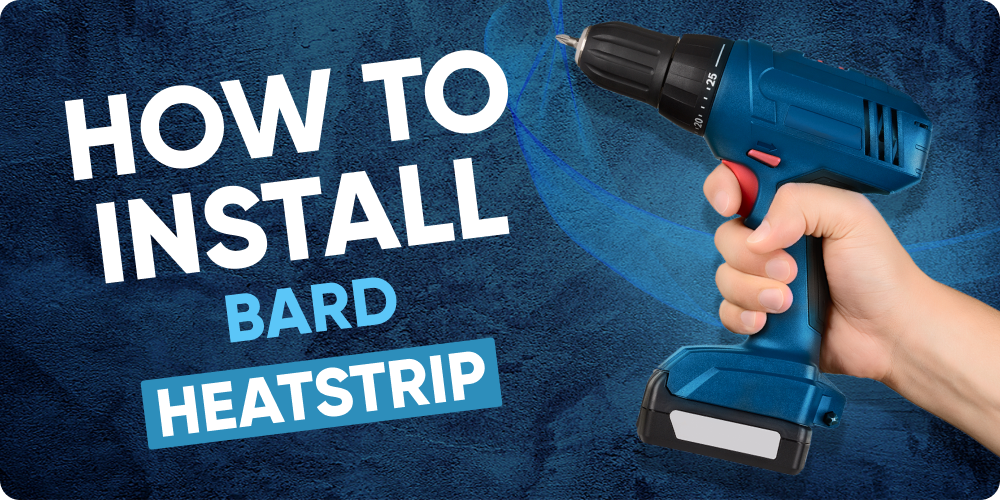Understanding HVAC System Types: Which One Is Right for Your Home?
HVAC systems come in several configurations. Split systems separate components between indoor and outdoor units. Package units contain everything in one cabinet. Heat pumps provide both heating and cooling. Gas furnaces pair with air conditioners for reliable comfort. Your climate, home construction, and existing infrastructure determine which system works best.
Not sure which system you need? Call us at 813-885-7999 and we'll review your options to help you make the right decision.
Split Systems: The Most Common Configuration
Split systems dominate residential HVAC installations. They separate components between an outdoor unit (condenser and compressor) and an indoor unit (air handler or furnace with evaporator coil). Refrigerant lines connect the two through your walls. This design keeps noisy compressors outside while distributing conditioned air through existing ductwork.
Common split system configurations include air conditioner with electric heat strips, air conditioner with gas furnace, heat pump with backup heat strips, or heat pump with gas furnace. Each setup solves heating and cooling differently based on your fuel availability and climate.
Air Conditioner with Electric Heat Strips
This split system pairs an outdoor air conditioner with an indoor air handler containing electric resistance heating. The air conditioner provides cooling. Electric heat strips warm your home when temperatures drop. Efficiency is measured by SEER (Seasonal Energy Efficiency Ratio) for cooling. Higher SEER means lower operating costs.
Each SEER point increase saves approximately $50-$75 annually depending on climate and usage. A jump from 14 SEER to 18 SEER cuts cooling costs by roughly 28%. Over 15 years, that's $3,000-$4,500 in savings. The higher upfront cost pays back through reduced electric bills.
Electric heat works in mild climates where heating demand is minimal. It's also practical when natural gas isn't available and propane costs more than electricity. Heat strips range from 5kW to 20kW capacity. A 10kW strip provides about 34,000 BTU of heat but costs more to operate than gas furnaces or heat pumps.
Heat Pump Systems
Heat pumps are air conditioners that reverse operation for heating. In summer, they remove heat from inside and dump it outside. In winter, they extract heat from outdoor air (even at 20°F) and pump it indoors. One system handles year-round comfort without separate heating equipment.
Modern heat pumps work efficiently down to 30-40°F. Below that, backup heat kicks in. This is either electric heat strips in the air handler or a gas furnace in dual-fuel configurations. Cold-climate models maintain full capacity at 5°F and keep working to -15°F, making heat pumps viable even in northern states.
Heat pumps consume 50-70% less energy than electric resistance heat. A system delivering 9 HSPF2 (Heating Seasonal Performance Factor) provides $2.67 worth of heat per dollar of electricity. Electric furnaces deliver exactly $1 of heat per dollar. In moderate climates, heat pumps cut heating costs by half or more compared to electric resistance.
Dual-fuel systems pair heat pumps with gas furnaces. The heat pump handles temperatures above 30-35°F. The gas furnace takes over when it gets colder. You get heat pump efficiency most of the heating season plus reliable gas backup for extreme cold. Popular in the Midwest and Northeast where winters are harsh but shoulder seasons are mild.
Air Conditioner with Gas Furnace
This traditional split system pairs an outdoor air conditioner with an indoor gas furnace and evaporator coil. The AC provides cooling. The furnace burns natural gas or propane to create heat. This configuration dominates cold climates where reliable heating is critical and natural gas is affordable.
Furnace efficiency uses AFUE (Annual Fuel Utilization Efficiency) ratings. An 80% AFUE furnace converts 80 cents of every gas dollar into heat, venting 20 cents up the chimney. Modern high-efficiency models reach 95-98% AFUE by extracting maximum heat before venting.
Gas furnaces create heat by burning fuel inside a heat exchanger. Hot gases pass through metal tubing and out through a vent pipe. Air from your home blows across the outside of the exchanger, absorbing heat from the hot metal. The warmed air then circulates through your ductwork.
High-efficiency condensing furnaces (95-98% AFUE) require PVC venting instead of metal chimneys. They cool exhaust gases so much that water vapor condenses out, necessitating condensate drains. Installation is more complex but the efficiency gain saves $250-$450 annually in cold climates. New flues may need to be run, adding $800-$1,200 to installation costs.
Package Units: All-in-One Systems
Package units contain all heating, cooling, and air handling components in a single outdoor cabinet. They sit on concrete pads, roofs, or beside homes. No indoor equipment except ductwork connections and thermostats. One installation point handles everything.
These systems are popular in regions with limited indoor space, manufactured homes, and commercial buildings. Package units come in several configurations: heat pump packages (heating and cooling), gas/electric packages (AC with gas furnace), or all-electric packages (AC with electric heat strips).
Installation is simpler than split systems because everything installs outside. But noise is a consideration since all mechanical components sit near windows and outdoor living spaces. Quality units include sound dampening to minimize this issue. Package units typically cost $5,200-$9,500 installed depending on size and configuration.
Variable Speed Technology
Variable speed air handlers and furnaces dramatically improve both comfort and efficiency. Standard equipment runs at full capacity or off. Variable speed systems modulate from 25-100% output, matching your exact heating or cooling needs moment by moment.
This technology increases system efficiency by 15-25% compared to single-speed equipment. Variable speed blowers run longer at lower speeds, removing more moisture during cooling and distributing heat more evenly during heating. Temperature stays within 0.5°F of setpoint instead of the 3-5°F swings common with single-speed systems.
Noise drops significantly. Variable speed equipment operates at 45-55 decibels compared to 65-75 decibels for standard equipment. Air filtration improves because longer runtimes give filters more opportunity to capture particles. The upgrade adds $800-$1,500 to system cost but provides substantial comfort benefits.
The Importance of Matched Systems
Indoor and outdoor components must match for rated efficiency and proper operation. Installing a new outdoor unit while keeping an old indoor unit cuts efficiency by 10-15%. The system might still work but won't deliver promised SEER or AFUE ratings. You paid for higher efficiency but won't get it.
Mismatched components create stress on your system. Different refrigerant flow rates, incompatible controls, and improper heat exchange lead to premature failure. What looks like a bargain (replacing only the outdoor unit) costs more long-term through higher energy bills, reduced comfort, and earlier replacement.
Replace both components together. You get full rated efficiency, proper warranty coverage, and systems designed to work together. Most manufacturers won't honor warranties on mixed systems. The incremental cost of replacing both now versus replacing the indoor unit in 2-3 years makes matched replacement the better value.
Efficiency and Payback
Higher efficiency equipment costs more upfront but saves money over time through lower utility bills. In warm, humid climates, the payback on high-efficiency AC or heat pumps happens in 3-5 years. After that, you pocket savings for the remaining 12-15 years of equipment life.
Calculate your specific payback by comparing equipment costs and annual savings. A 16 SEER system costing $5,200 installed versus a 14 SEER system at $4,400 means an $800 premium. If you save $120 annually in cooling costs, payback happens in 6.7 years. In a home where the system should last 15-18 years, you come out ahead.
In mild climates with modest heating and cooling needs, high-efficiency equipment takes longer to pay back. A home using 400 therms annually won't see the same savings as one using 1,200 therms. Consider your actual usage when deciding how much efficiency to buy. Sometimes mid-efficiency equipment offers the best value.
Understanding Our System Terminology
We use specific terms to describe system configurations clearly:
Central Heat & Air Conditioner: Split air conditioner with electric heat strips in the air handler. Provides cooling and electric heating through your ductwork.
Heat Pump & Air Conditioner: Split heat pump with backup electric heat strips. One system provides both heating and cooling by reversing refrigeration cycle.
Central Heat & Air Conditioner Package Unit: Self-contained package unit with electric heat strips. All components in one outdoor cabinet.
Gas Furnace & Air Conditioner: Split system with outdoor air conditioner and indoor gas furnace (natural gas or propane). Traditional configuration for cold climates.
Understanding these terms helps you identify the right system for your needs and ensures accurate quotes from contractors.
How Air Conditioning Works
All air conditioning systems operate on the same basic principle regardless of configuration. Air from inside your home passes through the indoor evaporator coil. The coil absorbs heat from the air. The resulting cool air circulates back into your home through ductwork.
Heat absorbed indoors transfers to the outdoor condenser coil. A fan blows outdoor air across the condenser, carrying heat away. The refrigerant cycle continues, moving heat from inside to outside as long as the system runs.
Higher SEER ratings mean the system moves more heat using less electricity. A 16 SEER system moves the same amount of heat as a 13 SEER system but uses 18% less electricity doing it. Over a cooling season, this efficiency difference translates directly to lower electric bills.
Frequently Asked Questions
-
What topics are covered in the Quick Education section?
HVAC basics, product types, sizing, SEER2 and HSPF2, BTU/tonnage, refrigerants, electrical needs, installation, and maintenance.
-
How do I choose the right HVAC system size for my home?
Use a proper load calculation; size by BTU/tonnage based on climate, insulation, windows, and square footage.
-
What is the difference between heat pumps, package units, and split systems?
Heat pumps provide heating and cooling; package units combine components outdoors; split systems split indoor and outdoor components.
-
How do SEER2 and HSPF2 ratings affect energy costs?
Higher ratings mean greater efficiency, lowering electricity use and operating costs, especially in extreme climates.
-
What electrical and installation factors should I consider before purchasing?
Verify voltage, breaker size, wiring, line set length, condensate routing, duct capacity, and required clearances.
-
What maintenance tasks can homeowners handle vs. what requires a contractor?
Homeowners can replace filters and clear drains; contractors should handle refrigerant, electrical diagnostics, and combustion checks.
-
How do I determine if my project requires a licensed installer?
Most jurisdictions require licensed pros for refrigerant handling, gas or high-voltage work, and permits to keep warranties valid.
-
What refrigerant types are commonly used and why does it matter?
Modern systems use refrigerants like R‑410A or newer options; compatibility, efficiency, and environmental impact differ by type.
-
What is tonnage and how does it relate to BTU?
Tonnage measures cooling capacity; 1 ton equals 12,000 BTU per hour of cooling.
-
How can I compare single-stage, two-stage, and variable-speed systems?
Single-stage is simplest; two-stage improves comfort and noise; variable-speed maximizes efficiency and humidity control.








